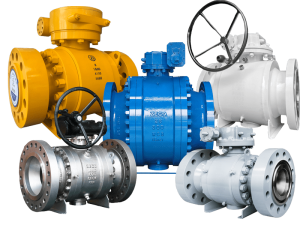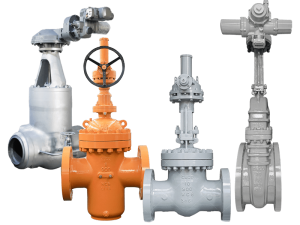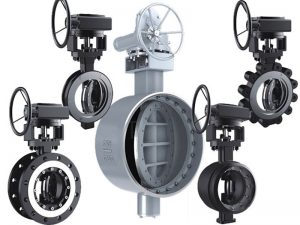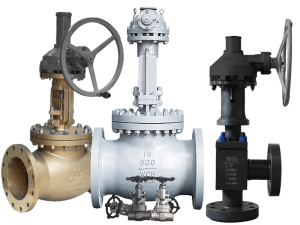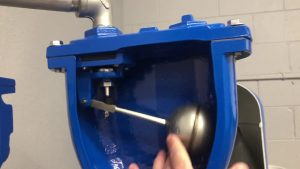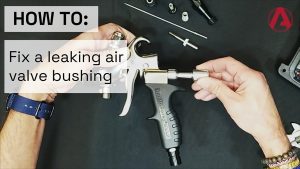Вы когда-нибудь задумывались, почему велосипедная шина остается накачанной даже после того, как вы сняли насос? Или как баллон вашего воздушного компрессора держит давление, не протекая назад?
Ответ: односторонние воздушные клапаны.
Эти простые устройства встречаются повсюду - от надувных игрушек для бассейнов до промышленных пневматических систем. И сегодня, будучи профессионалом воздушный клапан Производитель, я собираюсь показать вам, как именно как в одну сторону воздушный клапан работа.
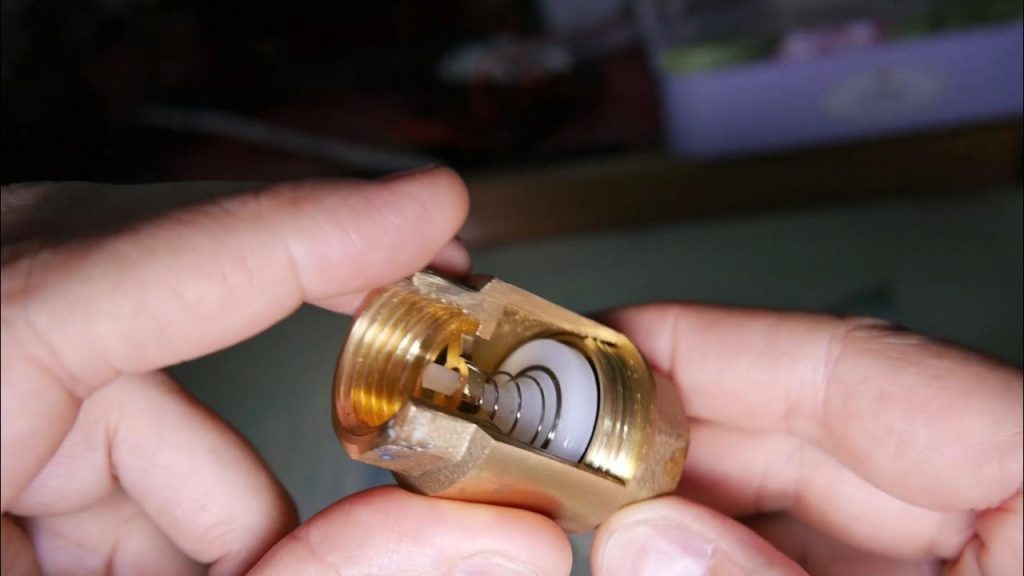
Оглавление
- Что такое односторонний воздушный клапан?
- Как работает односторонний воздушный клапан?
- Распространенные типы одноходовых воздушных клапанов
- Применение в реальном мире (где вы их найдете)
- Как правильно выбрать односторонний воздушный клапан
- Общие проблемы и решения
- Лучшие практики установки
- Советы по обслуживанию для продления срока службы клапанов
- Расширенные приложения и соображения
- Итоги
Что такое односторонний воздушный клапан?
Один путь воздушный клапан (также называемый обратным или невозвратным клапаном) - это механическое устройство, позволяющее воздуху течь только в одном направлении.
Подумайте об этом, как об односторонней двери для воздуха.
Воздух может проходить в прямом направлении. Но если он попытается пойти в обратном направлении? Клапан захлопывается.
Все очень просто.
И вот что самое интересное:
Эти клапаны работают автоматически. Никакого электричества. Никакого ручного управления. Только чистый механический гений, использующий перепад давления для выполнения всей работы.
Как работает односторонний воздушный клапан?
Вот как именно можно воздушный клапан работает:
Прямой поток (клапан открыт)
Когда давление воздуха на входе выше, чем на выходе, это давление давит на подвижный элемент внутри клапана.
Этот компонент - обычно шарик, диск или мембрана - сдвигается со своего места.
Бум. Клапан открывается, и воздух проходит через него.
Обратный поток (клапан закрыт)
Вот тут-то и становится интересно.
Если воздух пытается течь в обратном направлении (когда давление на выходе превышает давление на входе), это обратное давление толкает подвижный элемент обратно к седлу клапана.
Клапан плотно закрывается. Воздух не проходит.
И это происходит мгновенно. Никаких задержек. Не требуется ручного вмешательства.
Распространенные типы одноходовых воздушных клапанов
Не все односторонние клапаны созданы одинаковыми.
Для разных областей применения требуются разные конструкции клапанов. Вот наиболее распространенные типы, с которыми вы можете столкнуться:
1. Шаровые обратные клапаны
В них используется небольшой шарик (обычно металлический или пластиковый), который помещается в коническое седло.
Давление воздуха в прямом направлении поднимает мяч. Обратное давление плотно прижимает его.
Лучшее для: Малые пневматические инструменты, системы накачки шин, применение при низком давлении
Совет профессионала: Шаровые обратные клапаны работают в любой ориентации - вертикальной, горизонтальной и даже перевернутой.
2. Обратные клапаны с пружинным механизмом
В этих клапанах используется пружина, которая прижимает диск или маковку к седлу клапана.
Чтобы открыть клапан, давление воздуха должно преодолеть силу пружины. Когда давление падает, пружина захлопывает его.
Лучшее для: Воздушные компрессоры, системы высокого давления, приложения, требующие точного давления крекинга
3. Мембранные обратные клапаны
Вместо жестких компонентов в них используется гибкая мембрана (обычно из резины или тефлона).
Мембрана открывается при прямом потоке и плотно закрывается при обратном потоке.
Лучшее для: Применение при низком давлении, пыльная среда, медицинские приборы
4. Поворотные обратные клапаны
Представьте себе откидную створку, которая открывается под воздействием потока воздуха.
Они отлично подходят для труб большого диаметра, но могут создавать "захлопывание клапана" в высокоскоростных воздушных системах.
Лучшее для: Большие системы отопления, вентиляции и кондиционирования воздуха, промышленная вентиляция
Применение в реальном мире (где вы их найдете)
Односторонние воздушные клапаны встречаются буквально повсюду. Вот где вы, вероятно, сталкивались с ними, даже не подозревая об этом:
Воздушные компрессоры
Это самое важное.
В каждом воздушном компрессоре есть обратный клапан между насосом и резервуаром. Без него? Сжатый воздух будет устремляться обратно в насос, когда он отключится.
Результат? Потеря давления и сгоревший двигатель, пытающийся запуститься под высоким давлением.
Надувные изделия
Односторонние клапаны позволяют надувать предметы - от надувных матрасов до прыгающих домов - без выхода воздуха между насосами.
Вы когда-нибудь замечали, как можно снять насос с надувной игрушки для бассейна, и она тут же не сдуется? Спасибо обратному клапану.
Пневматические системы
В промышленных пневматических системах используются десятки таких клапанов:
- Управление направлением воздуха в контурах
- Поддерживайте постоянное давление в зонах
- Защитите дорогостоящее оборудование от повреждения обратным током
ОВКВ и вентиляция
В системах вентиляции зданий используются обратные клапаны, предотвращающие обратный ток загрязненного воздуха по воздуховодам.
Особенно важны в больницах и чистых помещениях.
Как правильно выбрать односторонний воздушный клапан
Выбрать неправильный клапан - все равно что надеть обувь не по размеру: она может работать, но не очень хорошо.
Вот что следует учесть:
1. Номинальное давление
Подберите клапан в соответствии с давлением в системе.
Слишком низко? Клапан может лопнуть.
Слишком высоко? Он может вообще не открыться.
2. Требования к скорости потока
Больше - не всегда лучше.
Переразмеренный клапан в небольшой системе может вызвать дребезжание или неполное уплотнение.
3. Ориентация при установке
Некоторые клапаны работают правильно только при вертикальной установке. Другим это безразлично.
Проверьте технические характеристики перед покупкой.
4. Экологические факторы
- Температура: Стандартные клапаны выходят из строя при сильной жаре или холоде
- Влажность: Влажные среды требуют коррозионностойких материалов
- Частицы: Пыльный воздух требует прочных уплотнительных поверхностей
Общие проблемы и решения
Даже простые устройства могут выйти из строя. Вот что происходит и как это исправить:
Клапан не открывается
Причина: Обычно засорение механизма или слишком сильное натяжение пружины
Фикс: Очистите клапан или замените его на модель с более низким давлением крекинга
Клапан не закрывается (обратный поток)
Причина: Поврежденная уплотнительная поверхность или инородный материал, препятствующий уплотнению
Фикс: Осмотрите и очистите уплотнительные поверхности. При износе замените.
Дребезжание или вибрация
Причина: Клапан слишком большой для расхода или колебаний давления
Фикс: Уменьшите клапан или добавьте ограничитель потока вверх по течению
Лучшие практики установки
Правильная установка - это разница между годами бесперебойной работы и постоянными головными болями.
1. Проверьте направление потока
Это кажется очевидным, но это ошибка установки #1.
На каждом клапане есть стрелка, указывающая направление потока. Установите его в обратном направлении, и вы создадите очень эффективный воздушный блок.
2. Используйте правильные фитинги
Не натягивайте несовпадающие резьбы. Используйте подходящие адаптеры и резьбовой герметик.
Фитинги с поперечной резьбой вызывают утечки и могут повредить корпус клапана.
3. Разрешить служебное помещение
Расположите клапаны так, чтобы к ним можно было получить доступ для обслуживания.
Поверьте, вы скажете себе спасибо, когда потребуется чистка или замена.
4. Рассмотрите размещение клапанов
Устанавливайте обратные клапаны как можно ближе к тому, что они защищают.
В системах с воздушными компрессорами это означает, что они находятся прямо на входе в резервуар, а не в 10 футах от него в линии подачи.
Советы по обслуживанию для продления срока службы клапанов
Односторонние клапаны не требуют особого ухода. Но небольшой уход за ними помогает в работе:
Регулярный осмотр
Проверьте наличие:
- Внешние повреждения или коррозия
- Необычные шумы во время работы
- Признаки утечки
Периодическая очистка
В зависимости от качества воздуха очищайте клапаны каждые 6-12 месяцев.
Системы сжатого воздуха с хорошей фильтрацией могут работать годами без чистки.
Тестирование
Простой тест: Отсоедините клапан и попробуйте выдуть воздух в обоих направлениях.
В одну сторону он должен течь легко, в другую - полностью блокироваться.
Расширенные приложения и соображения
Для тех, кто глубже погружается в пневматические системы, приведем некоторые расширенные понятия:
Давление растрескивания
Это минимальный перепад давления, необходимый для открытия клапана.
Более низкое давление крекинга = более чувствительный клапан. Важно для применения при низком давлении.
Пилотируемые обратные клапаны
Эти специальные клапаны могут принудительно открываться под действием внешнего управляющего давления.
Пригодится, если вам иногда нужен двунаправленный поток в обычной односторонней системе.
Несколько вариантов расположения клапанов
В сложных пневматических схемах часто используется несколько обратных клапанов в комбинации для создания сложной логики управления - и все это без электроники.
Итоги
Односторонние воздушные клапаны - это простые устройства, которые решают сложные задачи.
Они защищают оборудование, поддерживают давление и позволяют использовать бесчисленные пневматические системы, которые мы используем ежедневно.
Понимание как в одну сторону воздушный клапан работа поможет вам:
- Выберите подходящий клапан для вашего применения
- Эффективно устранять неполадки
- Создавайте лучшие пневматические системы
Надуваете ли вы баскетбольный мяч или разрабатываете промышленную автоматику, эти скромные клапаны делают все возможное благодаря элегантной механической простоте.

